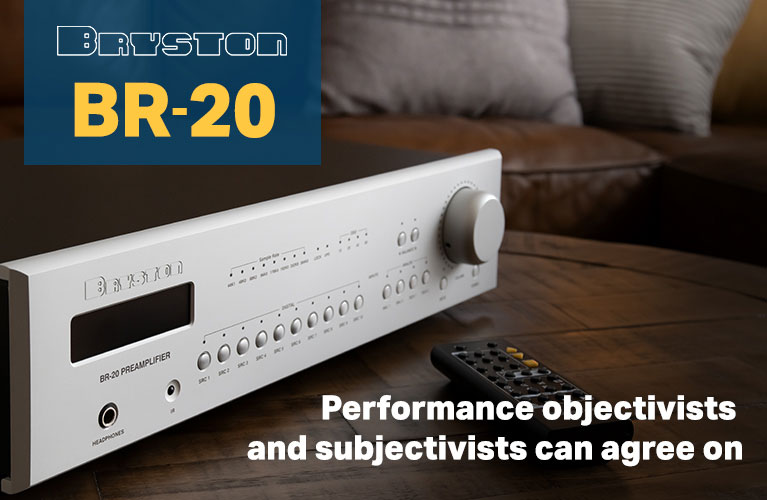 Matt Bonaccio’s review of the RME ADI-2 DAC FS digital-to-analog converter appeared on this site on January 15. Near the beginning of that review, Matt wrote: “Affordable, feature-laden DACs that measure well aren’t hard to come by these days, though the ADI-2 DAC FS manages to push the everyman’s standalone DAC paradigm to the extreme.” The word extreme applies both to its feature set and the way it performs objectively (i.e., on the test bench) and subjectively (i.e., listening), which might be a little surprising to some given that the ADI-2 measures only 8.5″W × 2.05″H × 5.9″D (without feet), weighs just 2.2 pounds, and is priced at a reasonable $1299 (in USD).
Matt Bonaccio’s review of the RME ADI-2 DAC FS digital-to-analog converter appeared on this site on January 15. Near the beginning of that review, Matt wrote: “Affordable, feature-laden DACs that measure well aren’t hard to come by these days, though the ADI-2 DAC FS manages to push the everyman’s standalone DAC paradigm to the extreme.” The word extreme applies both to its feature set and the way it performs objectively (i.e., on the test bench) and subjectively (i.e., listening), which might be a little surprising to some given that the ADI-2 measures only 8.5″W × 2.05″H × 5.9″D (without feet), weighs just 2.2 pounds, and is priced at a reasonable $1299 (in USD).
According to Matt, the ADI-2’s “specs and features list is a long one”—so long, in fact, it’s best to refer to his review to find out all that’s on offer from the German pro-audio company’s first audiophile DAC—but the salient features start with the ESS Technology ES9028Q2M digital-to-analog conversion chip at its core. On the unit’s backside are three digital inputs: USB, RCA coaxial, and TosLink optical. Matt pointed out that the USB input can handle “PCM data of up to 32 bits at 768kHz and one-bit data up to DSD256, while the other inputs accept PCM data only up to 192kHz.” Six user-selectable digital reconstruction filters are available.
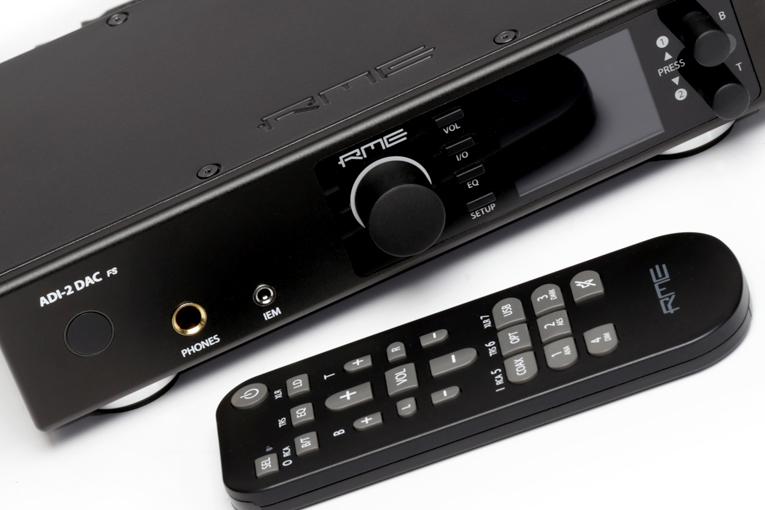
Matt made the point that the ADI-2 “sports an array of features that certainly make it versatile enough to quell the needs of most audiophiles, if not those of audio-production pros.” He went on to explain that a 2.17 gigaFLOPS DSP chip and a field-programmable gate array (FPGA) equip the ADI-2 with “controls for bass, treble, variable loudness, volume, left-to-right balance, and a five-band parametric EQ, all of which allow adjustments in 0.5dB increments.”
For analog outputs, the ADI-2 has both balanced (XLR) and single-ended (RCA) connectors on its backside, as well as 1/4″ and 1/8″ headphone jacks on the front panel. The 1/4″ headphone jack is dubbed Extreme Power, while the 1/8″ one is designed for in-ear monitors (IEMs). Diego Estan, our electronics measurements specialist, echoed Matt’s assessment when he wrote in his measurements report that the ADI-2 has “a dizzying array of features and settings”; and his report shows that he tested pretty much everything the DAC has to offer.
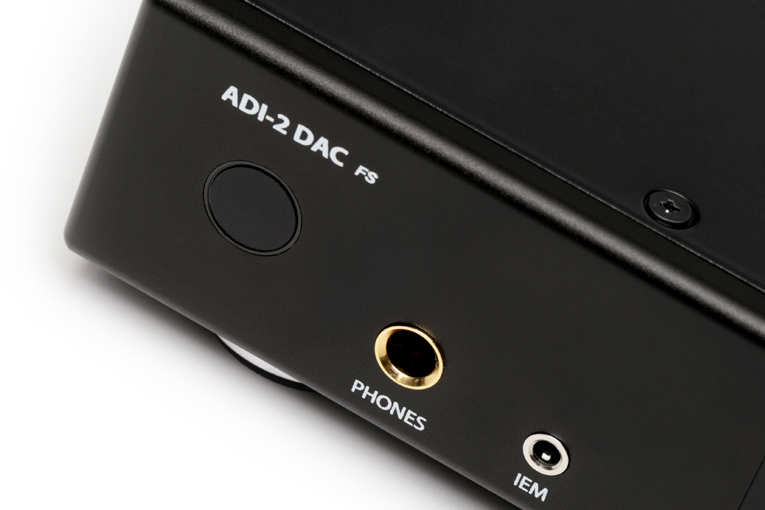
Matt primarily listened to the ADI-2 in his reference stereo system, and he prefaced the report of his listening impressions by noting the impact of the distortion one often hears in a hi-fi system: “The sensation of hearing distortion as it rears its head during a listening session affects not only the perception of grit or grain in the sound, but also our perception of loudness, the acoustic space, and the size and shape of images in the soundstage. If the measurements and marketing literature are to be believed, this DAC’s distortion and noise figures are low enough to be considered below the audible threshold.”
Our measurements of the ADI-2 corroborate RME’s claims of ultra-low distortion of all types. The measurements also show that this DAC outputs a signal with extraordinarily low noise. These qualities probably explain the difference Matt heard when he played Velvet Crush’s Teenage Symphonies to God (CD, 550 Music BK 64442) and compared the ADI-2’s analog outputs to the analog outputs of the Toshiba SD-9200 DVD player he used as a transport for the RME DAC:
I cranked up the volume while playing the CD straight from the Toshiba until it matched the level I’d been listening at with the DAC. It was too loud, and obviously so. The ADI-2 DAC FS plays so cleanly that the usual signals that it’s time to turn down the volume were so subdued that I didn’t even realize I wasn’t giving it a fair shake. . . . The distortion and noise levels were so low that I had to readjust my expectation of how my stereo was “supposed” to sound. I suppose this is a testament to RME’s design philosophy.
When Matt spun “the 2016 remaster of XTC’s Skylarking (CD, Ape House APEBD108),” he noted that the ADI-2 “rendered Andy Partridge’s howling vox with the clarity necessary for it to remain intelligible while Colin Moulding’s bass thumped beneath a soundstage filled with biting guitars and ethereal synthesizers.” On this album, Matt experimented with the ADI-2’s selectable filter settings, stating that “differences between them were very slight” and that he would be “hard-pressed to tell them apart in a blind test.” Still, the filter called Sharp ended up being Matt’s “usual choice.”
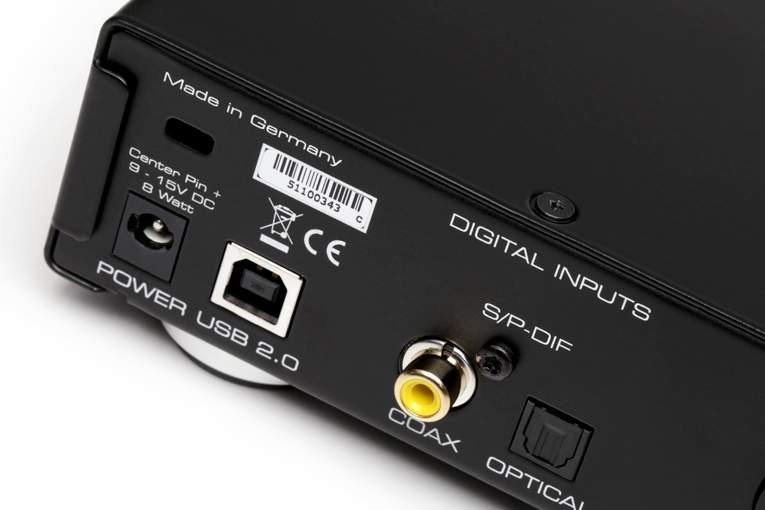
Matt next played “30000 Megatons,” off The Pond’s The Weather (256kbps AAC, Universal Music Australia / Spotify). It’s a song he noted has “a dynamic range that’s unusual in 21st-century digital recordings,” so he “gave the volume knob a good clockwise twist.” He penned that he was “impressed” by the ADI-2’s “composure as the blissed-out synthesizers and tight, strobing bass built up and up until the music totally enveloped” him and his living room. He added: “The DAC didn’t falter in either its control of the low frequencies or maintaining clear and distinct separation of sounds across the wide soundstage.”
But Matt did encounter what he felt was a “shortcoming” with the ADI-2. After playing Norah Jones’s Come Away with Me (CD, Blue Note 7243 5 32088 2 0) and Tigerlily, by Natalie Merchant (CD, Mobile Fidelity Sound Lab UDCD 771), he wrote: “I wasn’t as impressed as I was hoping to be.” Matt explained that both “came across as a little mechanical or even sterile.” This, however, he attributed to the ADI-2 being “a precision instrument, one that doesn’t add any sugar or spice to the source material.” Perhaps, Matt surmised in his review, “the depth you hear with these recordings [through the ADI-2] is what’s on the disc, but no more, or maybe even slightly flattened.”

Matt also tested both headphone outputs by using his Grado SR60e and Sennheiser HD 280 Pro headphones, but admitted that “neither really played to the strengths of either the Extreme Power or IEM output jacks.” In other words, these headphones weren’t sufficiently demanding. However, as mentioned earlier, our measurements did corroborate RME’s claims for low distortion and noise. In fact, the IEM output’s measured noise was so low that it was below the noise level of our APx555 B Series analyzer, which is both state of the art and an industry standard. That’s impressive. And Matt was suitably impressed:
The Extreme Power function forced me to turn the volume way down, so I expect that a more difficult load would be no problem for the ADI-2 DAC FS. Likewise, the level on the IEM output was lower, but there was still inaudibly low noise with both pairs of headphones. Playing Reading, Writing, and Arithmetic by the Sundays (CD, DGC 9 24277-2) through the IEM output with my Grados offered sound expectedly similar to what I normally experience through my stereo system—everything was well separated and highly intelligible, with sounds emerging from an inky-black background.
Matt took a cautioned approached with his recommendation of the ADI-2. He initially stated that “there’s someone out there for whom this DAC is the endgame. Since the ADI-2 DAC FS is a DAC, DSP unit, preamplifier, and headphone amp all rolled into one package, someone with a desktop setup who uses headphones as well as loudspeakers would be able to eliminate three or four boxes on their desk.” Yet he also mentioned that some people might not need all its features, and others might be “looking for a DAC with a particular sonic characteristic that synergistically complements their system.” But at the very end of his review, he summed up his thoughts: “While it’s not for everyone . . . the ADI-2 DAC FS is an astoundingly versatile DAC, one that represents a great value in its price class and beyond. And it’s one worthy of consideration by any music lover looking for a high-performing digital solution.”
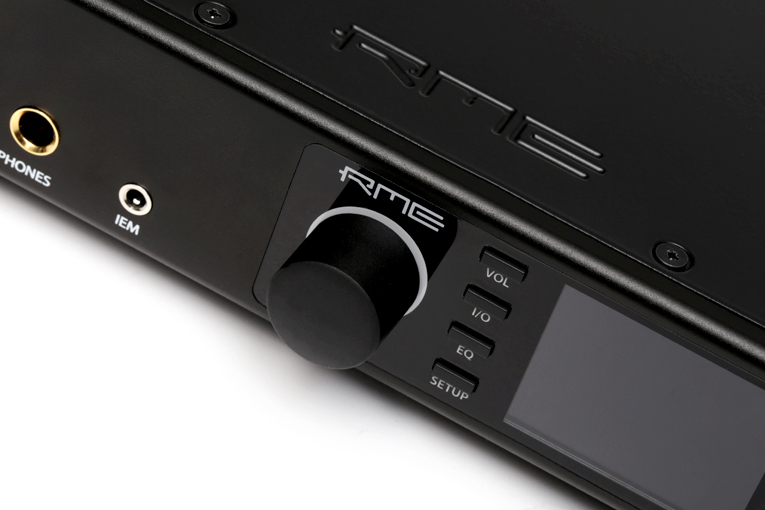
The combination of price with subjective and objective performance is what earned the ADI-2 DAC FS a Reviewers’ Choice award at the time the review was published—but its objective and subjective performance is what’s earned the ADI-2 a Recommended Reference Component award now.
Manufacturer contact information:
Am Pfanderling 60
D-85778 Haimhausen
Germany
Phone: +49 (0) 8133 918170
Website: rme-audio.com






















